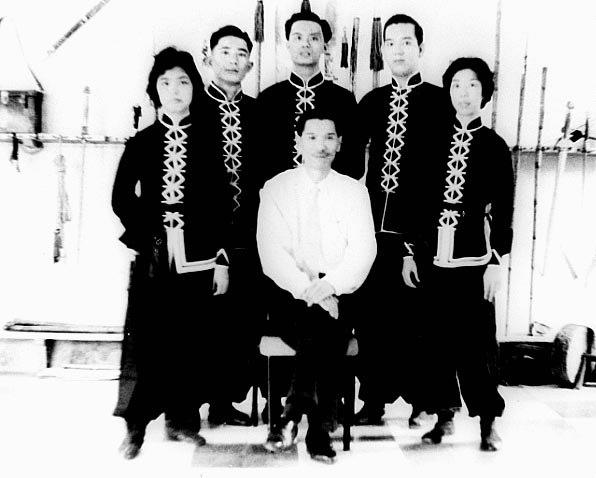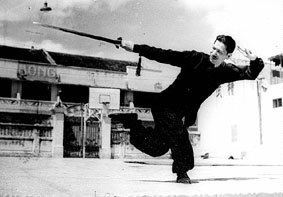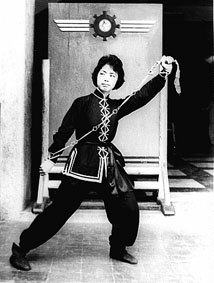 |
Thai Cuc Duong Lang (T'ai Chi Tang Lang) belong to the family of
kung fu styles of Praying Mantis of North. The Tang Lang style was founded
in the half XVII century by an expert of North Shaolin, originating of the
Shantung district, called Ðuong Lang o Vuong Lang (Zong Long o Wong Long).
|

|
The genesis of Thai Cuc Duong Lang is strictly bound to the events of the Founder Master in Vietnam. |
In 1945, M. Trieu Truc Khe, esperto di Tang Lang e di T'ai Chi Chuan, took shelter in the port of Hai Phong, in North Vietnam, to escape from the grave situation of political instability in China during and after the II world war. In 1954, following the separation of the country in North and South Vietnam, he moved to Saigon (Ho Chi Minh City), where he became member of the association of martial arts Tinh Vo Mon (= The Magnificent Door of the Martial Arts). From this association he took a considerable number of forms to introduce in his teaching program. During his stay in Saigon, M° Trieu Truc Khe decided to create his own school, joining his knowledge about Chinese martial arts.

|
In 1968, M. Trieu Truc Khe, seventy-year-old, left Vietnam and moved to Hong Kong, where he taught until his death on August, 3rd, 1991. His long stay in Vietnam, allowed him to develop an important local school of Thai Cuc Duong Lang, with seat in Cholon, in Chinese district of Ho Chi Minh City (Saigon), whose maximum representing is M° Tran To Nu known in Cholon as Sau Che (=Thu sister), direct pupil of M° Trieu Truc Khe and the only one that know of the entire program of the School in Vietnam. |
Tang Lang style distinguish itself for the peculiar rapidity of movements and attack:
to obtain this result, M. Ðuong Lang re-elaborated the hand techniques
characteristic of Shaolin to make the movements more similar to the praying mantis
during fight and, to harmonize the positions and the movements of leg to the velocity
of execution of hand techniques, he linked the foot movement of monkey, quicker and
more releasing.
The characteristic that distinguish Thai Cuc Duong Lang from other styles of the
Praying Mantis of North, is the fusion between elements proper of the traditional
schools of Tang Lang and elements coming from T'ai Chi Ch'uan: in a unique school we
find both quyen (= forms) characterized by rapidity and fluidity of movements, with
rapid changes of order and attack in fast sequences, and quyen carried on with slow and
continuous movements, characteristic of the so called "inner" styles.
interni.
The technical program of Thai Cuc Duong Lang include 13 forms of Tang Lang, four forms of T'ai Chi (one in couple), ten forms with the sword (Kiem) and different forms with other weapons (butterfly-sward, long stick, lance, chain, etc.). M. Trieu Truc Khe was famous for the use of Kiem (right sword with double cut) and of chain (That Cuoc Mai Hoa Tien), that in Thai Cuc Duong Lang is composed of seven section rather than nine.